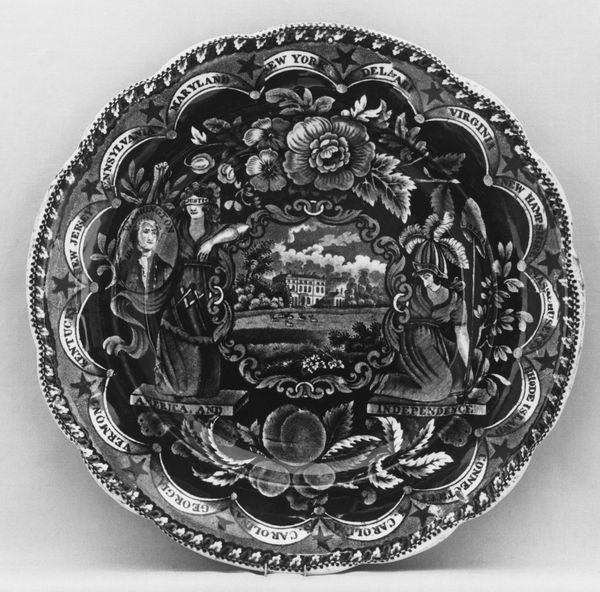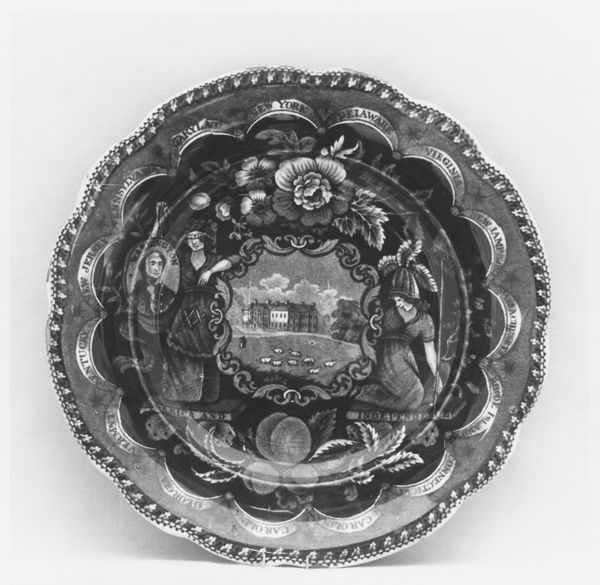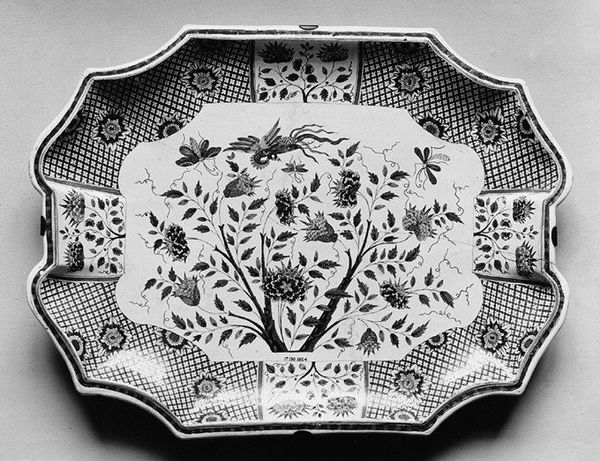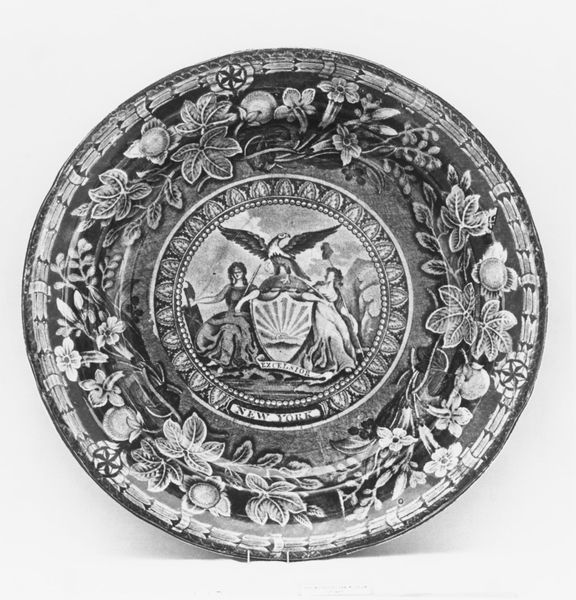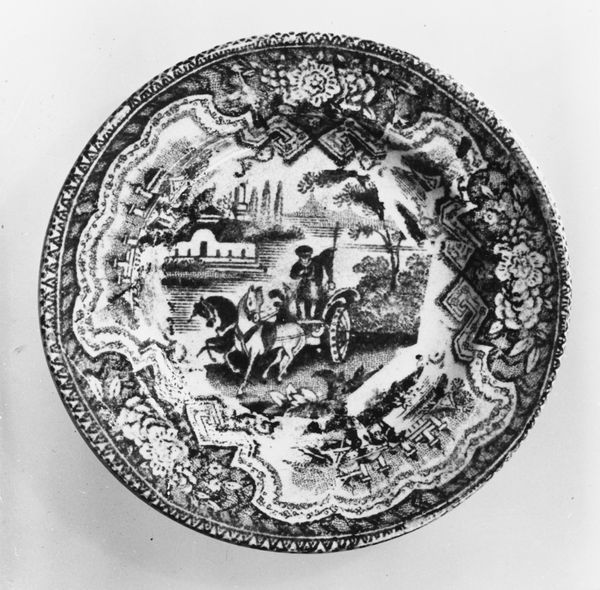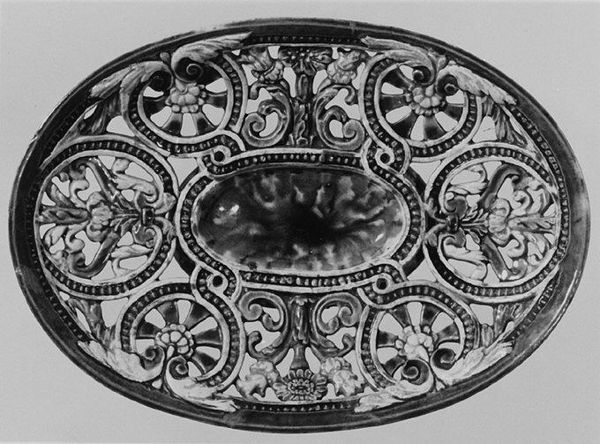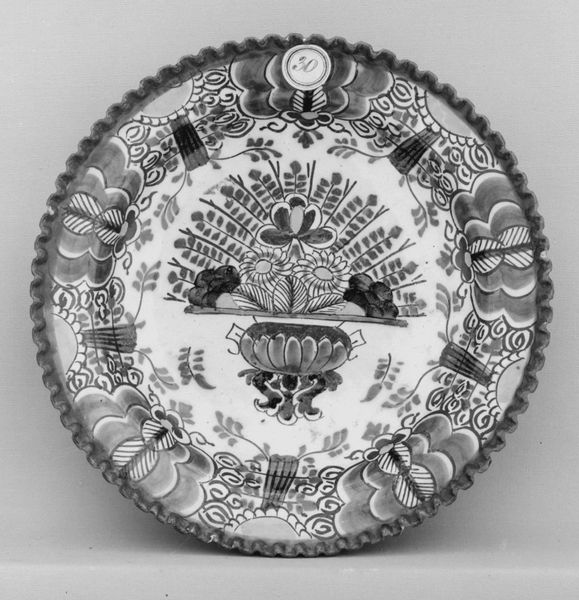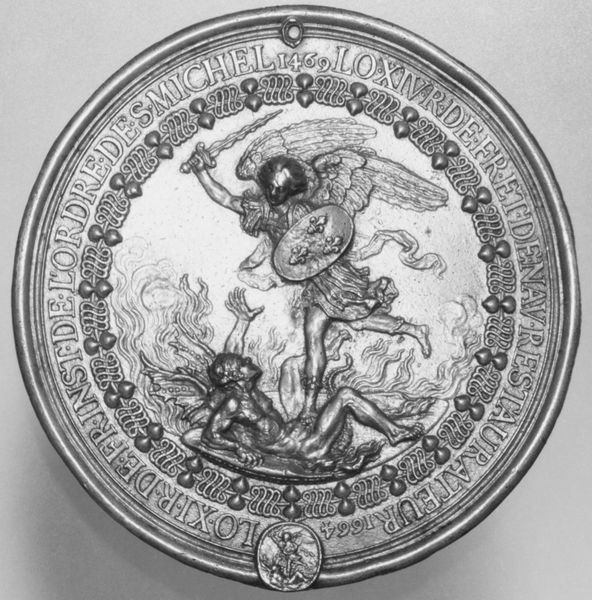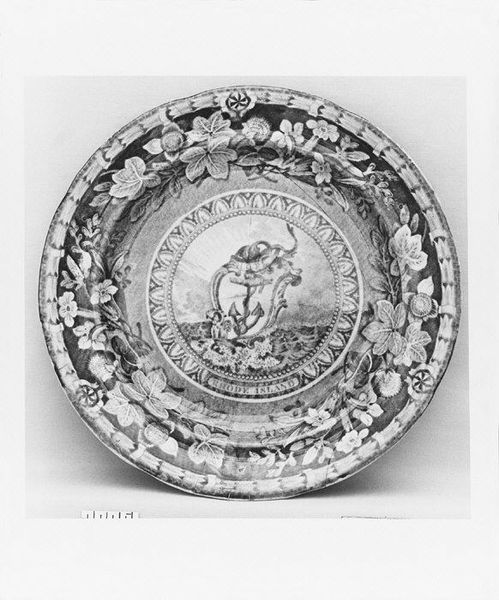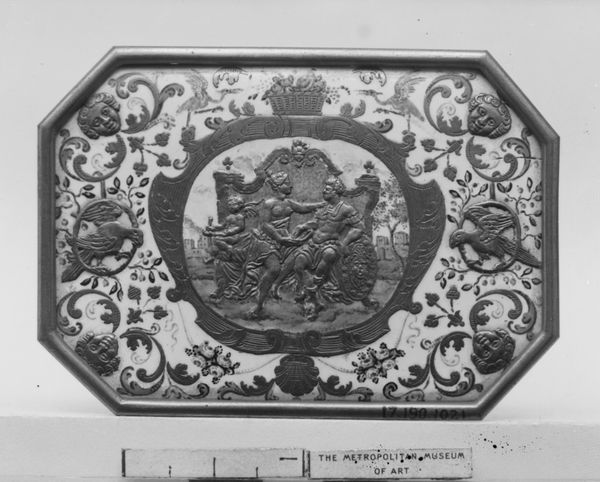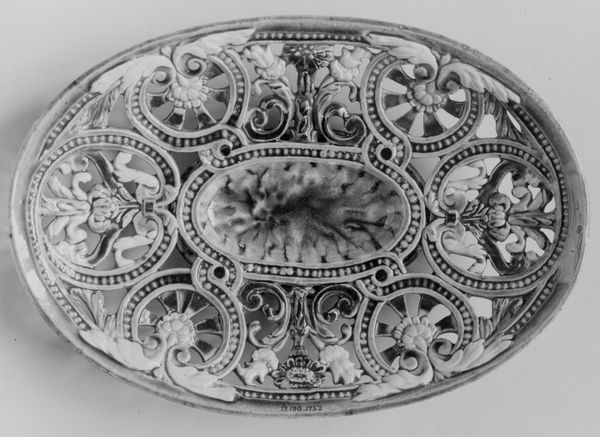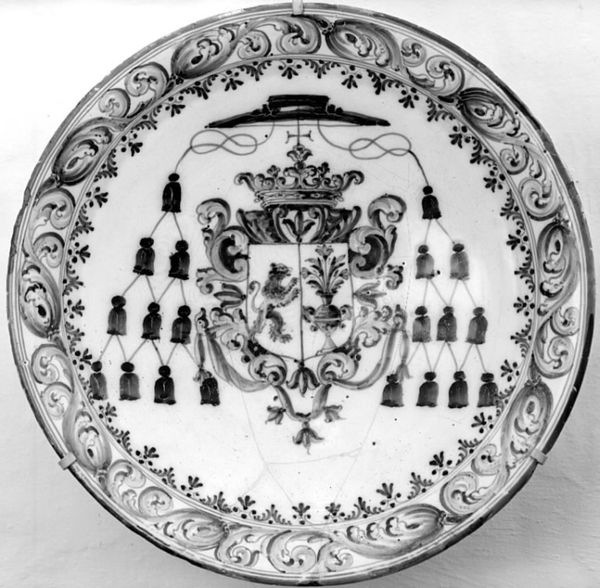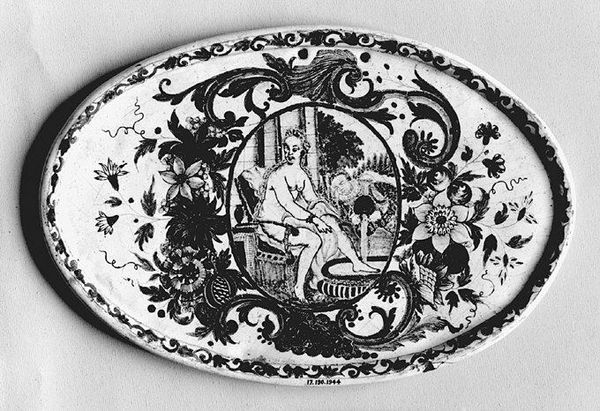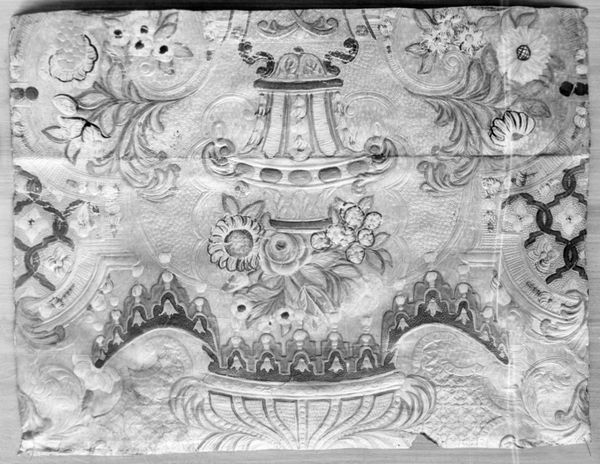
print, ceramic, earthenware
#
narrative-art
#
neoclassicism
# print
#
ceramic
#
flower
#
black and white theme
#
earthenware
#
stoneware
#
detailed
#
history-painting
#
decorative-art
Dimensions: 16 x 12 5/16 in. (40.6 x 31.3 cm)
Copyright: Public Domain
Editor: Here we have "Platter," a piece made between 1812 and 1837 by James and Ralph Clews. It’s earthenware with printed decoration, residing at the Metropolitan Museum of Art. It feels very...patriotic. I see what looks like the White House, allegorical figures, and the names of states bordering the entire form. It almost feels like I'm staring at a historical document. What catches your eye the most in this piece? Curator: Oh, absolutely a document. What I find fascinating is the sheer amount of information squeezed onto this platter! Look closely, it's like a carefully curated history lesson, seasoned with national pride and a dash of neoclassical flair. The figures of 'America' and 'Independence,' alongside portraits – possibly of Washington and Jefferson – speak volumes. But what story do you think it’s trying to tell? Is it a celebration or something more? Editor: Maybe a bit of both? I see symbols of nationhood, like the states' names, and the central image evokes the burgeoning government. But there’s something about the style. It almost feels... manufactured, which I guess it is, literally. It’s not like a romantic history painting with brushstrokes. Curator: You're spot on. It is mass-produced, relatively. That takes a bit away from it, in my humble opinion. These platters, made in England actually, were created for an American market eager for accessible art celebrating their new nation. Think of it as early merchandise or propaganda even. Did they perhaps forget to check their subject position at the door? How do you see the decorative aspect versus the propagandistic in it? Editor: I hadn’t considered the origin being so removed from the imagery, or the commodification, but now the balance in that composition definitely feels different! It’s a blend of pride, but maybe it feels more transactional than authentic. Curator: Exactly! That tension between nationalistic imagery and commercial production gives this piece a unique bite. A reminder that even 'patriotic' art can be layered with other intentions. I suppose there’s plenty of lessons left to learn from an old dish.
Comments
No comments
Be the first to comment and join the conversation on the ultimate creative platform.
